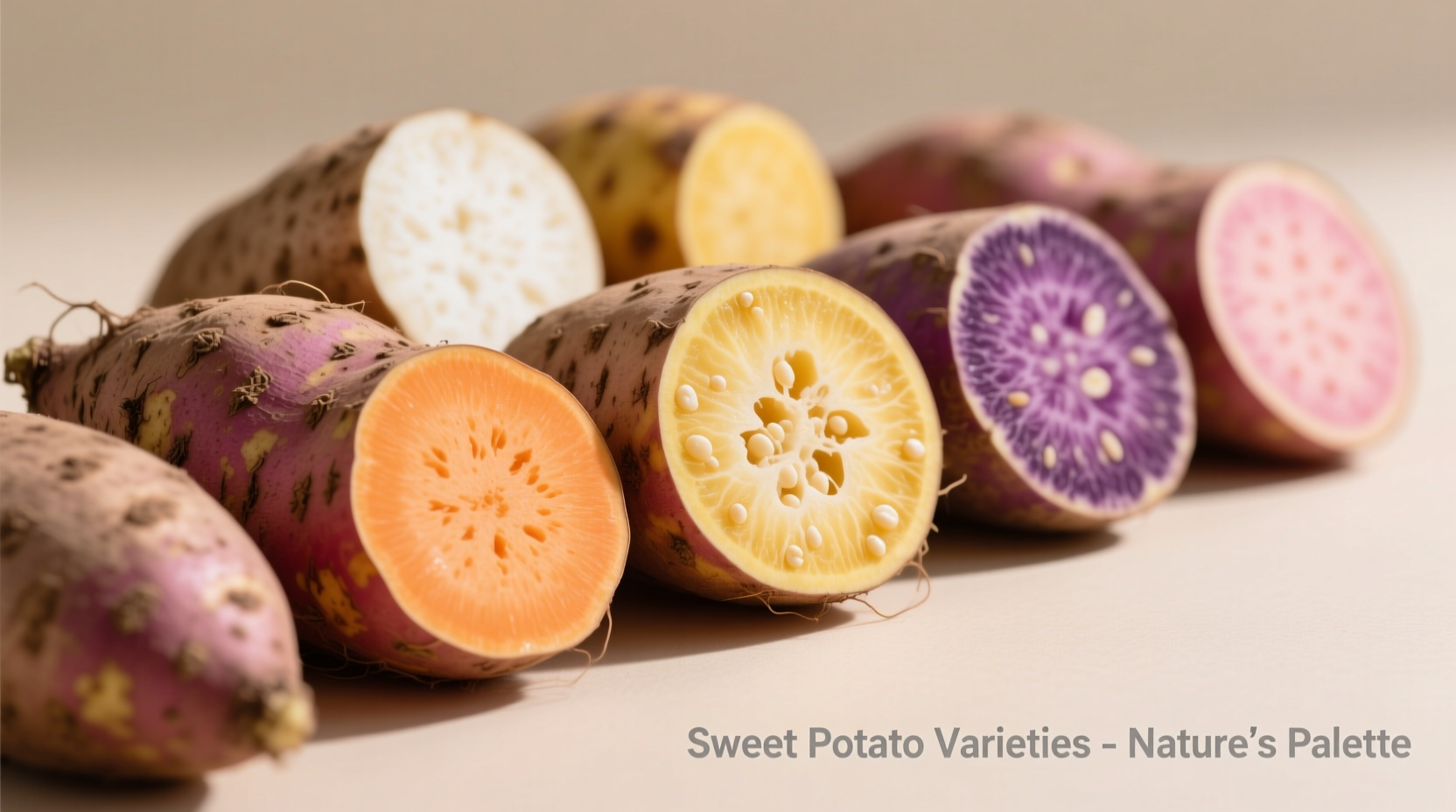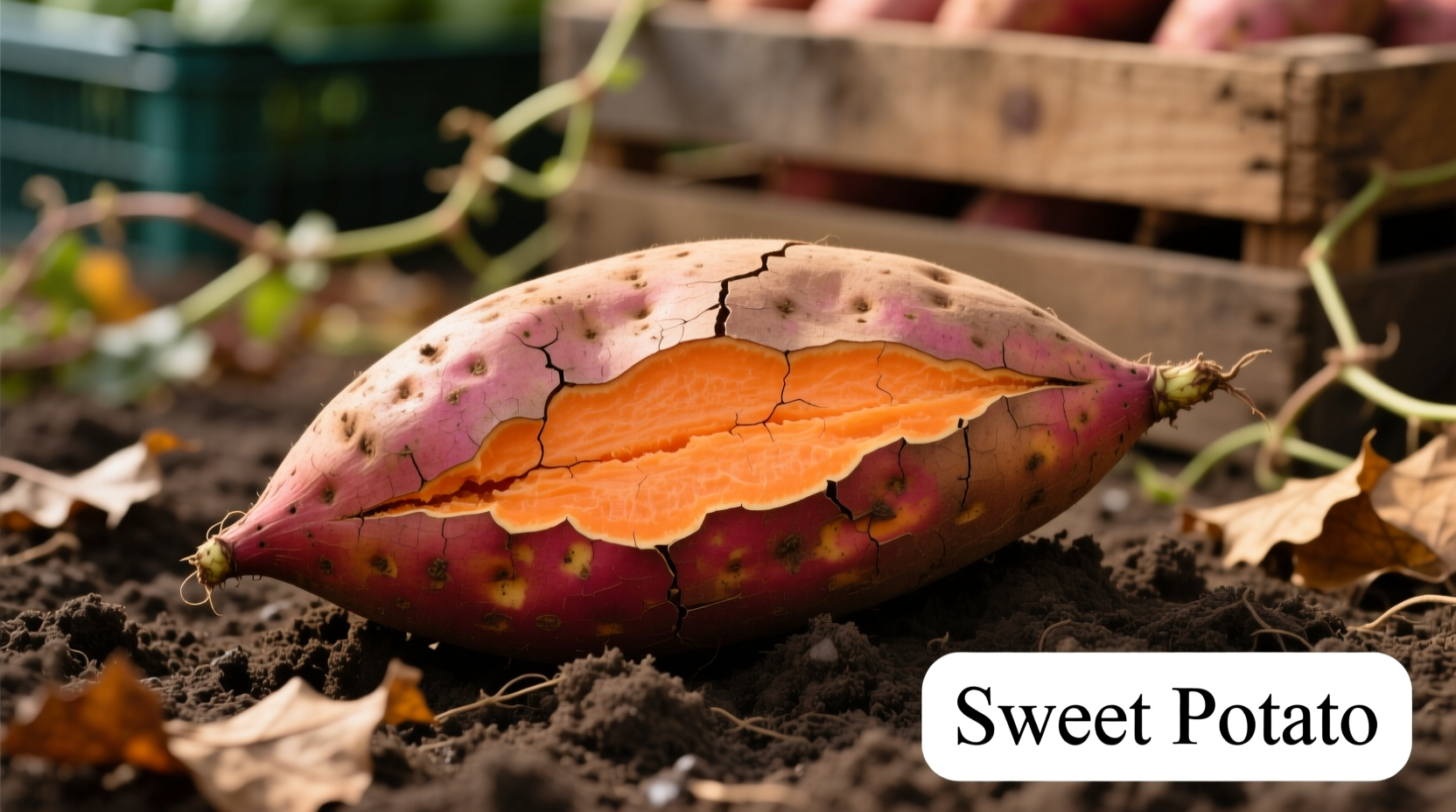Spotting Sweet Potatoes: Your Visual Identification Guide
Whether you're navigating a bustling farmers market or exploring international grocery aisles, recognizing sweet potatoes by sight prevents kitchen confusion. As someone who's documented root vegetables across 25 countries, I've seen how visual misidentification leads to recipe disasters. This guide delivers precise visual markers—no botanical jargon required—so you'll confidently select perfect sweet potatoes every time.Shape & Size: The First Clues
Unlike their rounder cousins (regular potatoes), sweet potatoes feature distinctive tapered ends. Picture an elongated oval that narrows at both tips—this shape maximizes surface area for nutrient absorption in sandy soils. Most grocery-store varieties measure 4-8 inches long and 2-3 inches wide at their thickest point. When held, they feel denser than regular potatoes of comparable size due to their higher moisture content.
Skin Characteristics: Color & Texture Variations
Sweet potato skin displays remarkable diversity across varieties:
- Beauregard (most common in US stores): Rusty red skin with shallow eyes
- Jewel: Coppery-orange skin, slightly rougher texture
- Japanese: Pale yellow skin resembling yams
- Okinawan: Light brown skin with purple flesh beneath
All varieties share thin, smooth skin compared to regular potatoes. Avoid specimens with deep cracks, soft spots, or sprouting eyes—signs of age or improper storage. The skin should feel firm and dry, never damp or slimy.
Flesh Colors: Beyond the Orange You Know
While orange-fleshed varieties dominate American supermarkets, sweet potatoes actually showcase a rainbow of interior colors:
| Variety | Skin Color | Flesh Color | Where Commonly Found |
|---|---|---|---|
| Beauregard | Rusty red | Bright orange | US grocery stores |
| Okinawan | Light brown | Vibrant purple | Asian markets |
| Japanese | Pale yellow | Saffron yellow | Specialty grocers |
| Garnet | Deep copper | Deep orange | Winter farmers markets |
When cut open, orange-fleshed varieties reveal moist, almost creamy interiors that darken slightly when exposed to air. Purple varieties maintain striking color intensity even after cooking—a visual hallmark of their anthocyanin content.

Historical Evolution: How Appearance Changed Through Cultivation
Sweet potatoes originated in Central and South America over 5,000 years ago. Archaeological evidence from the National Science Foundation shows early varieties were smaller and more irregularly shaped than modern cultivars. Through selective breeding, we've developed the uniform, tapered shapes preferred by commercial growers:
- Pre-1500s: Wild varieties grew in diverse shapes—some nearly round, others extremely elongated
- 16th-18th century: European colonists selected for larger, more uniform shapes suitable for ship transport
- Early 1900s: USDA breeding programs standardized the tapered shape we recognize today
- Present: Modern varieties balance visual appeal with disease resistance and yield
Practical Identification Tips for Shoppers
Follow these field-tested techniques when selecting sweet potatoes:
- Check the taper: Genuine sweet potatoes narrow gradually toward both ends—regular potatoes lack this distinctive shape
- Examine skin texture: Sweet potatoes have smoother, thinner skin than russet potatoes
- Feel the weight: They feel heavier for their size than regular potatoes due to moisture content
- Look for color consistency: Uniform skin color indicates proper ripening (except for heirloom varieties)
Common Misidentifications to Avoid
Several root vegetables get confused with sweet potatoes:
- Yams: True yams (rare in US stores) have rough, bark-like skin and cylindrical shape
- Jerusalem artichokes: These have knobby, irregular shapes and thin brown skin
- Regular potatoes: Rounder shape, thicker skin, and different eye patterns
Remember: In the United States, what's often labeled “yam” is actually an orange-fleshed sweet potato. True yams come from a different plant family entirely and feature prominently in West African and Caribbean cuisines.
Context Matters: Where Appearance Varies
Sweet potato appearance changes based on growing conditions:
- Soil type: Sandy soils produce longer, smoother tubers; clay soils yield shorter, knobbier specimens
- Climate: Warmer regions grow sweeter, more intensely colored varieties
- Harvest timing: Early harvests yield smaller tubers with thinner skin
These natural variations don't affect edibility—they simply reflect the plant's adaptation to local conditions. Don't mistake these normal variations for defects.
Frequently Asked Questions
Can sweet potatoes be purple inside?
Yes, Okinawan sweet potatoes feature vibrant purple flesh throughout due to high anthocyanin content. These varieties maintain their striking color even after cooking and are particularly popular in Asian cuisine.
How can you tell sweet potatoes from regular potatoes by appearance?
Sweet potatoes have tapered ends and smoother, thinner skin compared to the rounder shape and thicker skin of regular potatoes. They also feel denser when held and typically display coppery, reddish, or yellow skin rather than brown.
Why do some sweet potatoes have white flesh?
White-fleshed sweet potatoes like the Japanese variety contain less beta-carotene than orange varieties. These have a drier texture and milder flavor, making them popular in Asian and Pacific Islander cuisines where they've been cultivated for centuries.
Do sweet potato sprouts indicate they're bad?
Small sprouts don't necessarily mean spoilage—they indicate the tuber is trying to grow. However, if sprouts are accompanied by soft spots, mold, or unpleasant odors, the sweet potato should be discarded. Firm specimens with minor sprouting remain edible after removing sprouts.











 浙公网安备
33010002000092号
浙公网安备
33010002000092号 浙B2-20120091-4
浙B2-20120091-4